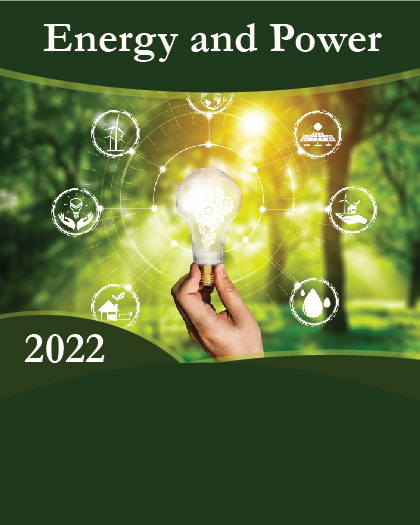
Global Stationary Fuel Cell Market Size More Than Double to Touch USD 10.6 Billion by 2029
Global stationary fuel cell market is flourishing because of an increasing demand for low-noise alternatives to combustion engines and growing adoption of stationary fuel cell.
Report Ocean, a leading strategic consulting and market research firm, in its recent study, estimated the global stationary fuel cell market size at USD 4.83 billion in 2022. During the forecast period between 2023 and 2029, BlueWeave expects the global stationary fuel cell market size to grow at a significant CAGR of 11.93% reaching a value of USD 10.59 billion by 2029. Major growth drivers for the global stationary fuel cell market include an increasing demand for clean and efficient energy solutions, government support and incentives, and advancements in fuel cell technology. Governments worldwide are investing in research initiatives and implementing financing programs aimed at supporting advancements in the stationary fuel cell market. Developed economies like the United States and Europe are particularly focused on embracing technological innovations to transform their electrical grids, which is expected to contribute significantly to market growth during the forecast period. However, high cost of stationary fuel cell and limited public awareness regarding stationary fuel cell are anticipated to restrain the overall market growth.
Global Stationary Fuel Cell Market - Overview:
Stationary fuel cells utilize an electrochemical reaction instead of combustion to generate electricity, offering clean, efficient, and dependable off-grid power for various applications such as homes, businesses, telecommunications networks, utilities, and more. Numerous prominent companies, including Adobe, Apple, AT&T, CBS, Coca-Cola, Cox Communications, Delmarva Power, eBay, Google, Honda, Microsoft, Target, and Walmart, have embraced fuel cells for both primary and backup power. According to data gathered by FCHEA, as of January 2020, the United States has witnessed the installation of over 550 megawatts (MW) of stationary fuel cells, enabling the nationwide provision of clean and reliable distributed power to consumers. One of the significant advantages of stationary fuel cells is their quiet operation and minimal pollution emissions, allowing for versatile installation in various locations. These systems directly supply power to end-users without the efficiency losses associated with long-distance grid transmission. Furthermore, stationary fuel cell installations require significantly less space compared to other clean energy technologies. For instance, a 10 MW fuel cell installation can be situated on approximately one acre of land, whereas solar power would require around 10 acres and wind power approximately 50 acres. Most stationary fuel cells are directly connected to the natural gas infrastructure, enabling the generation of resilient power for critical facilities even during grid power unavailability.
Impact of COVID-19 on Global Stationary Fuel Cell Market
COVID-19 pandemic had a dual impact on the global stationary fuel cell market. On the one hand, the pandemic caused disruptions in the supply chain, leading to delays in the manufacturing and delivery of fuel cell systems. Travel restrictions and lockdown measures have also affected installation and maintenance activities, slowing down market growth. The economic downturn resulting from the pandemic led to reduced investments in new projects and a cautious approach from businesses and industries. On the other hand, the pandemic highlighted the importance of reliable and resilient power sources, particularly for critical facilities such as hospitals, data centers, and telecommunications networks. This increased awareness of the need for uninterrupted power supply has created opportunities for stationary fuel cells as a viable backup power solution. Moreover, the emphasis on sustainable and clean energy solutions continued, with governments and organizations prioritizing green recovery plans and renewable energy investments.
Global Stationary Fuel Cell Market - By Application:
Based on application, the global stationary fuel cell market is segmented into Combined Heat & Power (CHP), Prime Power, and Uninterrupted Power Supply (UPS). The combined heat & power (CHP) segment held the highest market share among the application segments in the global stationary fuel cell market. CHP systems, also known as cogeneration, offer a highly efficient and sustainable solution by simultaneously producing electricity and utilizing the waste heat for heating or cooling purposes. This segment's dominance can be attributed to the increasing demand for energy efficiency, reduction in greenhouse gas emissions, and cost savings achieved through the combined generation of electricity and heat. CHP applications find extensive use in residential, commercial, and industrial sectors, providing reliable and environmentally friendly power solutions. The CHP segment's market leadership reflects the growing recognition of the benefits offered by stationary fuel cells in optimizing energy usage and minimizing environmental impact.
Competitive Landscape:
Major players operating in the global stationary fuel cell market include: Toshiba Medical Systems Corp., Bruker Corp., Xinapse Systems Ltd., Esaote, Inc., ClaroNAv, Inc., Merge Healthcare Inc., Aquilab GmbH, Spacelabs Healthcare, Inc., MIM Type Inc., Carestream Health, Inc., Agfa-Gevaert Corp., Philips Healthcare, Siemens Healthineers, and GE Healthcare. To further enhance their market share, these companies employ various strategies, including mergers and acquisitions, partnerships, joint ventures, license agreements, and new product launches.
The in-depth analysis of the report provides information about growth potential, upcoming trends, and statistics of Global Stationary Fuel Cell Market. It also highlights the factors driving forecasts of total market size. The report promises to provide recent technology trends in Global Stationary Fuel Cell Market and industry insights to help decision-makers make sound strategic decisions. Furthermore, the report also analyzes the growth drivers, challenges, and competitive dynamics of the market.
























